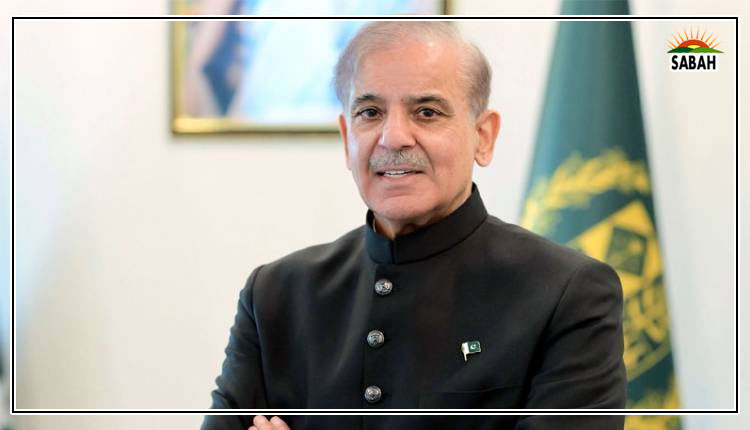Mixed developments…Khurram Husain
THE news is not all bad, though the outlook remains gloomy and will take at least a year to rectify. The stabilisation phase of economic management is drawing to a close.
The government is making the right moves with plans for a debt buyback to retire a large amount of maturing Treasury bills, although one hopes this wont simply be swapped with one debt instrument or another. The sheer size of the domestic debt, standing at slightly below 50 per cent of the total GDP (at current market prices), certainly makes it the elephant in the room, and it seems the government might finally be turning its attention to bringing this under control.
Inflation dropping to below 7pc, based on the year-on-year increase in the Consumer Price Index, is also a welcome development. This was supposed to happen by the same time next year as per projections, but tightly controlled money supply has managed to nip the problem in the bud. As an aside, this should put to rest the questions raised during the period the State Bank ran record-high interest rates to combat the record-high inflation.
Numerous people have asked whether high interest rates have ever helped bring inflation down in Pakistan. The answer is that high interest rates are pretty much the only tool that has ever succeeded in putting out inflationary bushfires, whether in the late 2000s or the early 2020s.
But compare some macroeconomic indicators shared in the latest IMF statement following the Executive Boards approval. The final report has still not been released, so we will have to wait a few more days for the finer details. Broadly speaking, though, almost all projections show improving fundamentals when compared with the same projections from the staff report of May 2024, which came at the conclusion of the last Stand-by Arrangement.
Here are some examples of what was projected for fiscal years 2024 and 2025 in May. Revenue grants were seen coming in at 12.5pc and 12.4pc of GDP, whereas they are now projected at 12.6pc and 15.4pc, respectively. The primary balance on the fiscal account was projected to show a surplus of 0.4pc of GDP for both fiscal years back in May.
Today, it is projected at 0.9pc and 2pc of GDP instead, a marked improvement. Back in May, general government and government-guaranteed debt was projected to come in at 76pc and 73.6pc of GDP for both fiscal years. Today, it is projected at 73pc and 75.1pc, showing some improvement in the current fiscal year, but something is driving it back up again next year. To find out why it is projected to rise in the next fiscal year, we will have to wait for the staff report.
The economy has not seen a period of stability like this since at least 2019.
The story continues, though. On the external side, projections drawn up in May on the current account showed a deficit of 0.8pc and 1.2pc in the two respective fiscal years. In the latest projections for the same fiscal year, these have come down to 0.2pc and 0.9pc respectively. Projections of gross reserves are more or less unchanged in both scenarios, hinting possibly at higher debt-service payments on the external side in the next fiscal year, but once again, we will have to wait for the final staff report to be released before being able to say anything definitively.
The story goes on and on. The economy has not seen a period of stability like this since at least 2019. Calm is returning to the markets, to the outlook, to the macro indicators, the fiscal equation, and the monetary aggregates after a period of intense volatility that ran at least from 2021 to 2023. This much is undeniable, and it needs to be said.
However, another thing also needs to be said. This is a fragile calm reached after a hard-fought struggle. It has taken more than 13 months of relentless adjustment and hewing to very tough and narrow conditions to achieve it. But it can be lost in 13 weeks if the rope of adjustment is let go prematurely. The staff report to be released in the next few days will tell us how long this bout of austerity and stability must last before the country can be said to be out of the woods. But it is safe to say that not much can change until end FY25.
Periods of calm have been brought about in the past as well. The year 2019 was the last example. Before that, we had a volatile period of destabilising growth in the mid-2010s. Prior to these was another period of very difficult adjustment and absorption of the consequences of the great financial crisis as well as the escalating war on terror.
In each case, the hard-fought stability was squandered as the government of the day gunned for growth without reform. Rather than making changes to the economys productivity, growth was induced by showering resources upon economic agents, whether in the form of subsidies, artificially low exchange rates and interest rates, amnesty schemes, and other such gimmicks. That is what created the boom. That is also what created the bust.
This is the temptation that must be avoided now. In the weeks to come, the rulers are likely to feel that enough has been done to stabilise the economy, and the time has come to shift gears towards growth. But the economy is not ready for growth, and pumping the accelerator will only squander this stability and bring back volatility and shrill warnings of default.
It is important to draw up a vision of reform that can help the economy shed its baggage of unproductive state-owned enterprises that have been kept afloat only by government bailouts and uncompetitive private sector firms addicted to rents. Without such a vision, Pakistan will forever remain trapped in a low-growth equilibrium.
The writer is a business and economy journalist.
khurram.husain@gmail.com
X: @khurramhusain
Published in Dawn, October 3rd, 2024
Courtesy Dawn












